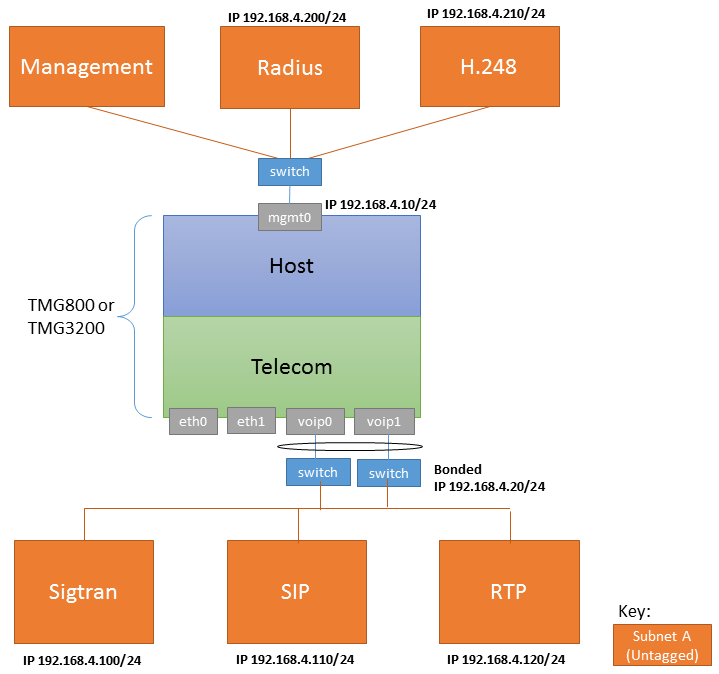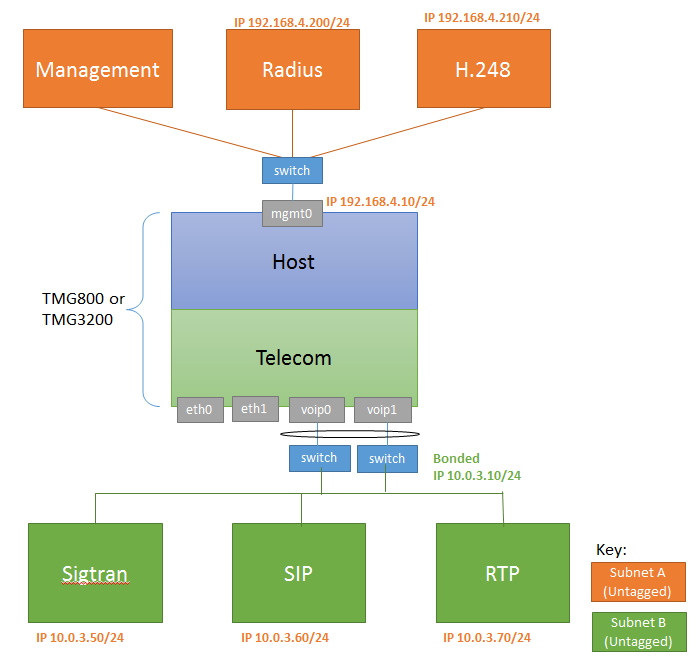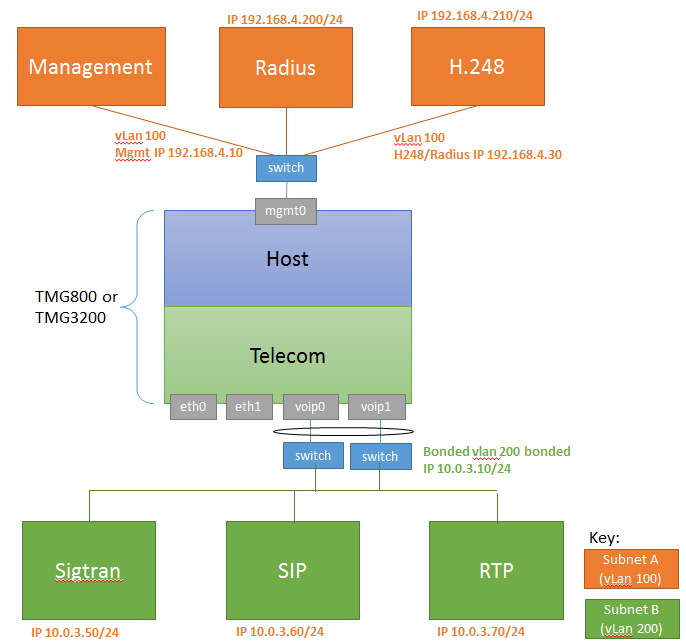Use Cases:Network Configuration A
From TBwiki
(Difference between revisions)
(→Applies to version(s): v2.8.) |
(→Applies to version(s): v2.8.) |
||
| Line 3: | Line 3: | ||
__TOC__ | __TOC__ | ||
| − | + | The following uses cases provide guideance for the most common IP network configurations using the Web Portal: | |
| − | * [[Use_Cases: | + | * [[Use_Cases:Network_Configuration_IP_UseCase1_A|IP Network Configuration:One subnet, Two IP Addresses, Untagged]] |
| − | * Two subnets, One IP per subnet, untagged | + | * [[Use_Cases:Network_Configuration_IP_UseCase2_A|IP Network Configuration:Two subnets, One IP per subnet, untagged ]] |
| − | * Two VLAN, Three IP Addresses, tagged | + | * [[Use_Cases:Network_Configuration_IP_UseCase3_A|IP Network Configuration:Two VLAN, Three IP Addresses, tagged]] |
== One subnet, Two IP Addresses, Untagged == | == One subnet, Two IP Addresses, Untagged == | ||
Revision as of 10:57, 13 July 2015
Applies to version(s): v2.8.
Contents |
The following uses cases provide guideance for the most common IP network configurations using the Web Portal:
- IP Network Configuration:One subnet, Two IP Addresses, Untagged
- IP Network Configuration:Two subnets, One IP per subnet, untagged
- IP Network Configuration:Two VLAN, Three IP Addresses, tagged
One subnet, Two IP Addresses, Untagged
|
Two subnets, One IP per subnet, untagged
|
Two VLAN, Three IP Addresses, tagged
|


